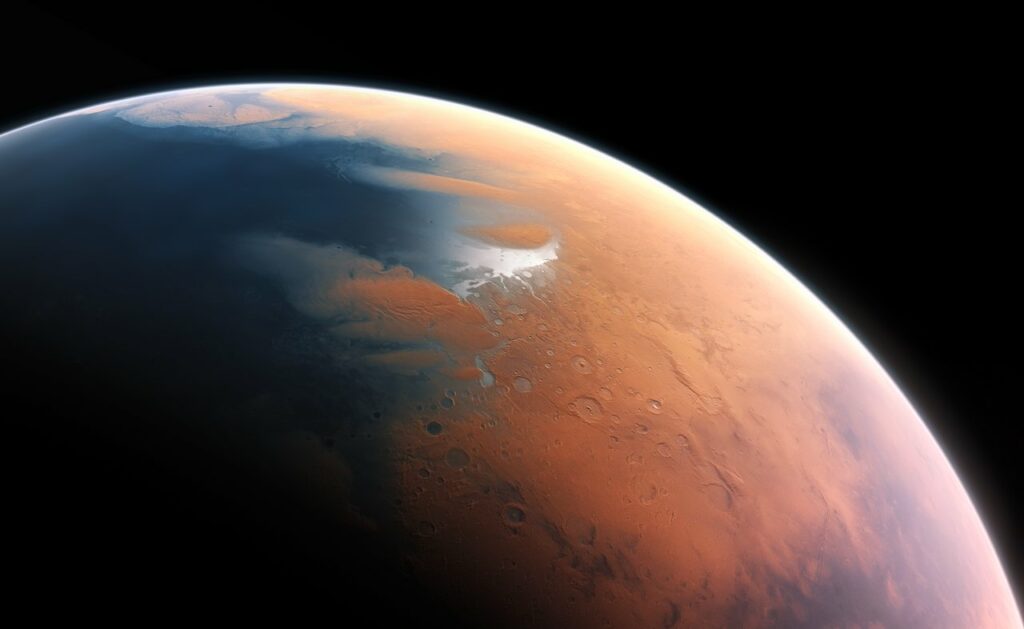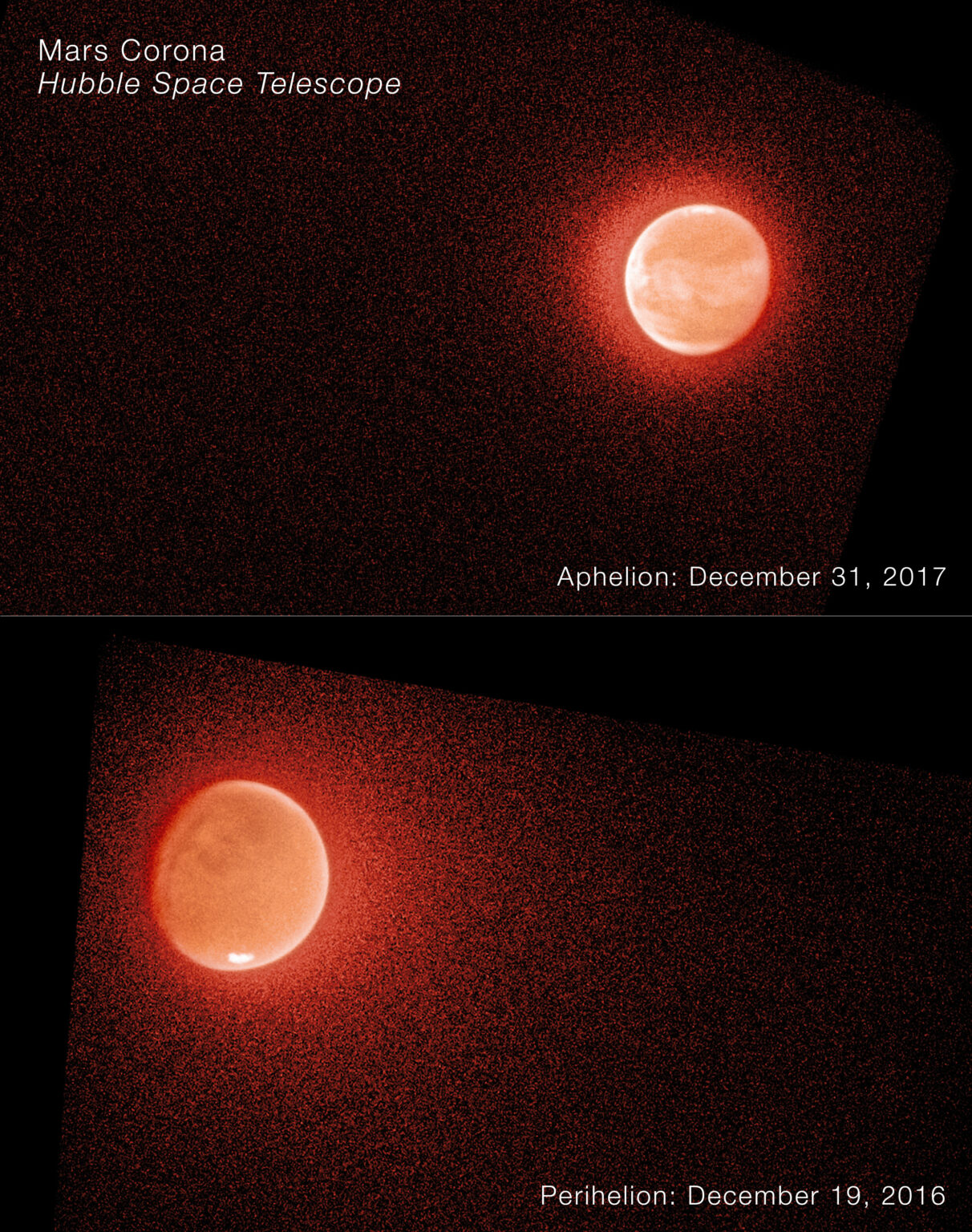Mars was once a very wet planet, as evidenced by the numerous traces on its surface. Scientists have known that over the past 3 billion years, some water has gone deep underground, but what happened to the rest? Now the Hubble Space Telescope and the MAVEN mission have helped solve that mystery.

“There are only two places water can go. It can freeze into the ground, or the water molecule can break into atoms, and the atoms can escape from the top of the atmosphere into space,” explains study leader John Clarke of the Center for Space Physics at Boston University in Massachusetts. “To understand how much water there was and what happened to it, we need to understand how the atoms escape into space.”
Clarke and his team combined data from the Hubble telescope and the Mars-exploring MAVEN spacecraft to measure the amount and current rate of hydrogen atoms leaking into space. This information allowed them to extrapolate the rate of leakage back in time to understand the history of water on the red planet.
Escaping hydrogen and deuterium
The key to the history of water on Mars is deuterium, an isotope of hydrogen with a neutron in its nucleus. Due to twice as much mass as ordinary hydrogen, it escapes into space much more slowly.
As Mars lost water, the ratio of deuterium to hydrogen in its atmosphere gradually increased. Measuring this ratio gives scientists a way to estimate how much water was on Mars during warm and wet periods. And studying how these atoms are volatilizing now allows us to better understand the processes that have determined the rate of volatilization over the past four billion years, and thus extrapolate into the past.
Although most of the study’s data came from the MAVEN spacecraft, it is not sensitive enough to observe deuterium emission at all times of the Martian year. The fact is that compared to Earth, the orbit of Mars is more elongated. When the Red Planet passes the apogee of its orbit, deuterium emissions become weak. Therefore, scientists used Hubble data to fill the gaps and calculate the cycle for three Martian years.
Dynamic Martian atmosphere
The analysis showed that Mars’ atmosphere is much more dynamic and turbulent than previously thought. It heats up and cools down in short periods of time that can be measured in hours. The atmosphere also expands and contracts as the brightness of the Sun on Mars changes by 40% over the course of a local year.

Scientists have discovered that the latter is a key factor. The rate of hydrogen and deuterium leakage changes rapidly as Mars approaches the Sun. In the classical picture that scientists previously had, these atoms were thought to be slowly rising up through the atmosphere to an altitude from which they could fly away. But in fact, when Mars passes perihelion, water molecules, which are the source of hydrogen and deuterium, rise up very quickly, releasing atoms at high altitudes.
According to the researchers, this is an important finding. Studying the history of water on Mars is fundamental not only to understanding the planets in our Solar System, but also to the evolution of worlds in other star systems.
We previously told you how Mars’ polar caps gave scientists insight into its past climate changes.
According to Phys.org


